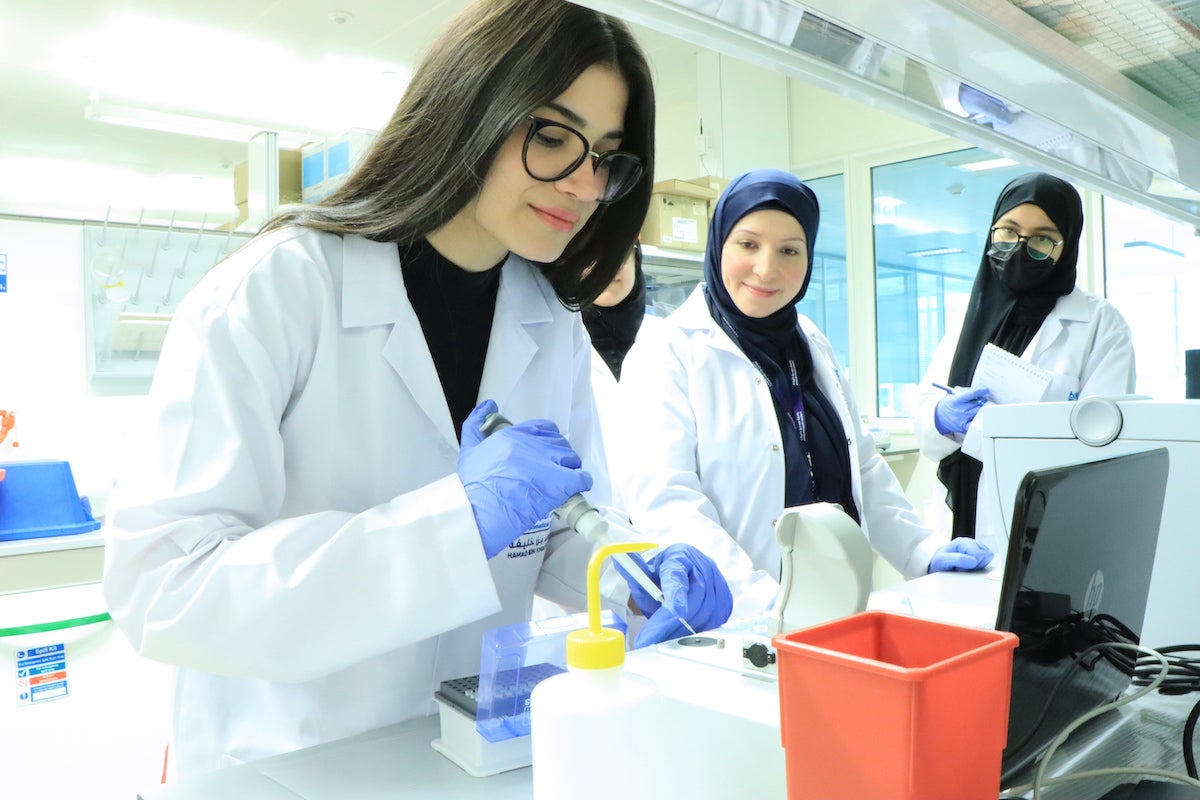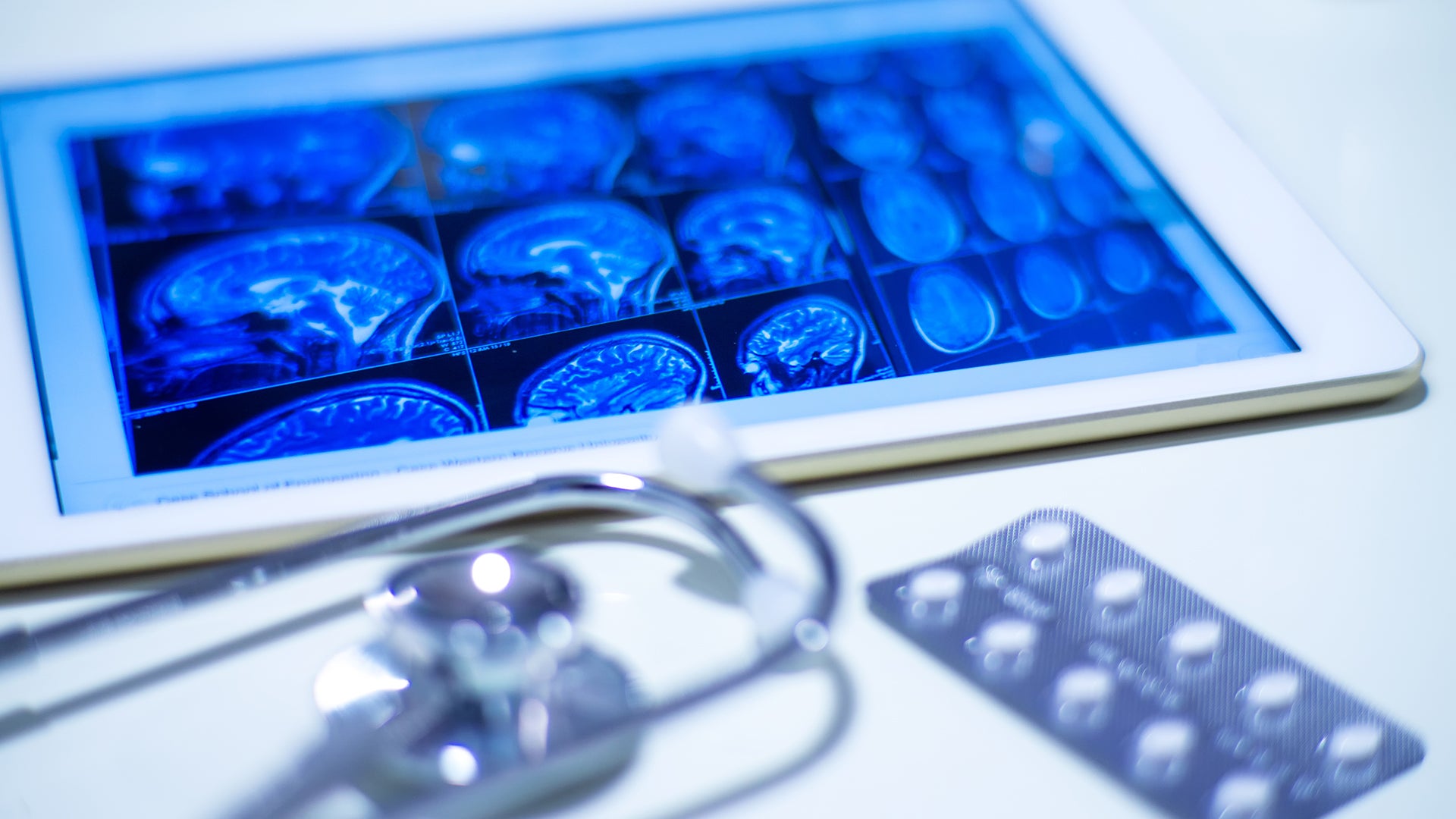
There are over 50 million people worldwide living with dementia. As the proportion of older people in the population is increasing in nearly every country, the number of people with dementia is projected to triple by 2050, reaching over 152 million, and a predicted cost of 2 trillion USD by 2030 [1].
The restrictions imposed due to the COVID-19 pandemic have accelerated the ill-being of people with dementia. According to the 2020 Alzheimer’s disease report, more than a quarter of people who died in the first wave of COVID-19 had dementia [2].
September is globally commemorated as Alzheimer’s disease awareness month and the purpose is to encourage people to seek out information, advice and support. In this article, researchers from Qatar Biomedical Research Institute (QBRI) discuss the general features, risk factors, treatment, care and prevention of Alzheimer’s disease and dementia.
What is Alzheimer’s disease?
Alzheimer’s is the most common type of dementia. It is a progressive disease that is not part of normal aging and that causes certain areas of the brain to degenerate (Fig 1) [3]. Alzheimer’s disease is markedly characterized by a deterioration in cognitive function. It can affect thinking, memory, language, orientation, comprehension and judgement.
![Fig 1. The physiological structure of the brain and neurons in (a) healthy brain and (b) Alzheimer’s disease brain [3]. Fig 1. The physiological structure of the brain and neurons in (a) healthy brain and (b) Alzheimer’s disease brain [3].](https://www.hbku.edu.qa/sites/default/files/picture1alzh2.jpg)
Fig 1. The physiological structure of the brain and neurons in (a) healthy brain and (b) Alzheimer’s disease brain [3].
Warning signs and diagnosis
One of the first signs of Alzheimer’s disease and dementia is memory problems or forgetfulness that disrupts routine life. A few examples would be getting lost in familiar places, misplacing items, difficulty in completing common tasks, and changes in mood or behavior.
Early and accurate diagnosis is key for management and treatment of symptoms and to develop the best care plan. A person suspected of having Alzheimer's disease should undergo several tests to confirm the diagnosis, including medical and family history-taking, cognitive assessments, neurological examination, neuroimaging, and laboratory tests [4].
Causes and risk factors
Alzheimer's disease is considered a multifactorial disease. A definite underlying cause of the disease is not yet known, but two main hypotheses were proposed: cholinergic and amyloid hypotheses [5].
Several risk factors such as aging, familial inheritance, head injuries, vascular diseases, infections, and other environmental factors are identified and associated with Alzheimer’s disease [6].
Most risk factors for Alzheimer’s disease are modifiable and can be prevented without medical intervention (Fig 2).
![Fig 2. The risk factors for Alzheimer’s disease [3]. Fig 2. The risk factors for Alzheimer’s disease [3].](https://www.hbku.edu.qa/sites/default/files/picture1alzh.jpg)
Fig 2. The risk factors for Alzheimer’s disease [3].
What are the available treatments?
There is currently no treatment that can cure Alzheimer’s disease; however, it is managed through non-pharmacologic and pharmacologic interventions. The aim of non-pharmacologic strategies is to ameliorate the behavioral problems and neuropsychiatric symptoms.
As for the pharmacologic treatment, there are currently only two classes of drugs approved for the treatment of Alzheimer's disease, including inhibitors to the cholinesterase enzyme and antagonists to N-methyl d-aspartate (NMDA) [4]. These drugs have limited efficacity and can only delay the disease progression by about six months to two years. Although still being debated today, the US Food and Drug Administration has recently approved the first new medication, Aduhelm (aducanumab), for Alzheimer’s disease in nearly two decades.
How to support people living with dementia?
When given the right conditions, people with Alzheimer’s disease and other types of dementia can live fulfilling lives and have greater independence. There is a lot that family members, carers and society can do to improve their sense of well-being and increase their belonging to the community and space around them. The following are examples:
- Reduce internal and external environmental risks and stressors, such as stairs, confusing pathways, and loud noises.
- Support their movement and engagement in different activities.
- Encourage a daily and safe exposure to sunlight to benefit from its therapeutic effects; namely increasing energy levels and reducing pain and stress.
- Encourage autonomy when possible and provide home and social care when needed.
The Alzheimer’s disease 2020 report emphasized the importance of smart and convenient designing of homes, gardens, and other private or common spaces to provide an easier, safer and more enjoyable environment for people with dementia [2].
How can we prevent or delay the onset of Alzheimer’s disease and other forms of dementia?
The guidelines for prevention of dementia are the same for prevention of other diseases, and they revolve around a healthy environment and lifestyle. The list is long and below are a few recommendations:
- Avoid smoking and alcohol consumption.
- Treat chronic conditions such as high blood pressure, diabetes, and heart disease.
- Avoid head injuries.
- Always engage in work and hobbies that you enjoy, to boost your overall well-being.
- Our bodies are not designed for a sedentary life. Therefore, physical fitness is crucial to keep us healthy and happy. Exercising for at least 30 minutes a day, five days a week, is optimal.
- And finally, do not forget to eat fresh fruits and vegetables daily.
Contributed by: Dr. Kyung Chul Shin (Postdoctoral Researcher, QBRI), Houda Yasmine Ali Moussa Research Associate (QBRI)
Arabic text validation: Rowaida Z. Taha, Research Associate (QBRI)
Editors: Dr. Adviti Naik (Postdoctoral Researcher, QBRI), Dr. Prasanna Kolatkar (Senior Scientist, QBRI)
For references, please click here.
Related News










